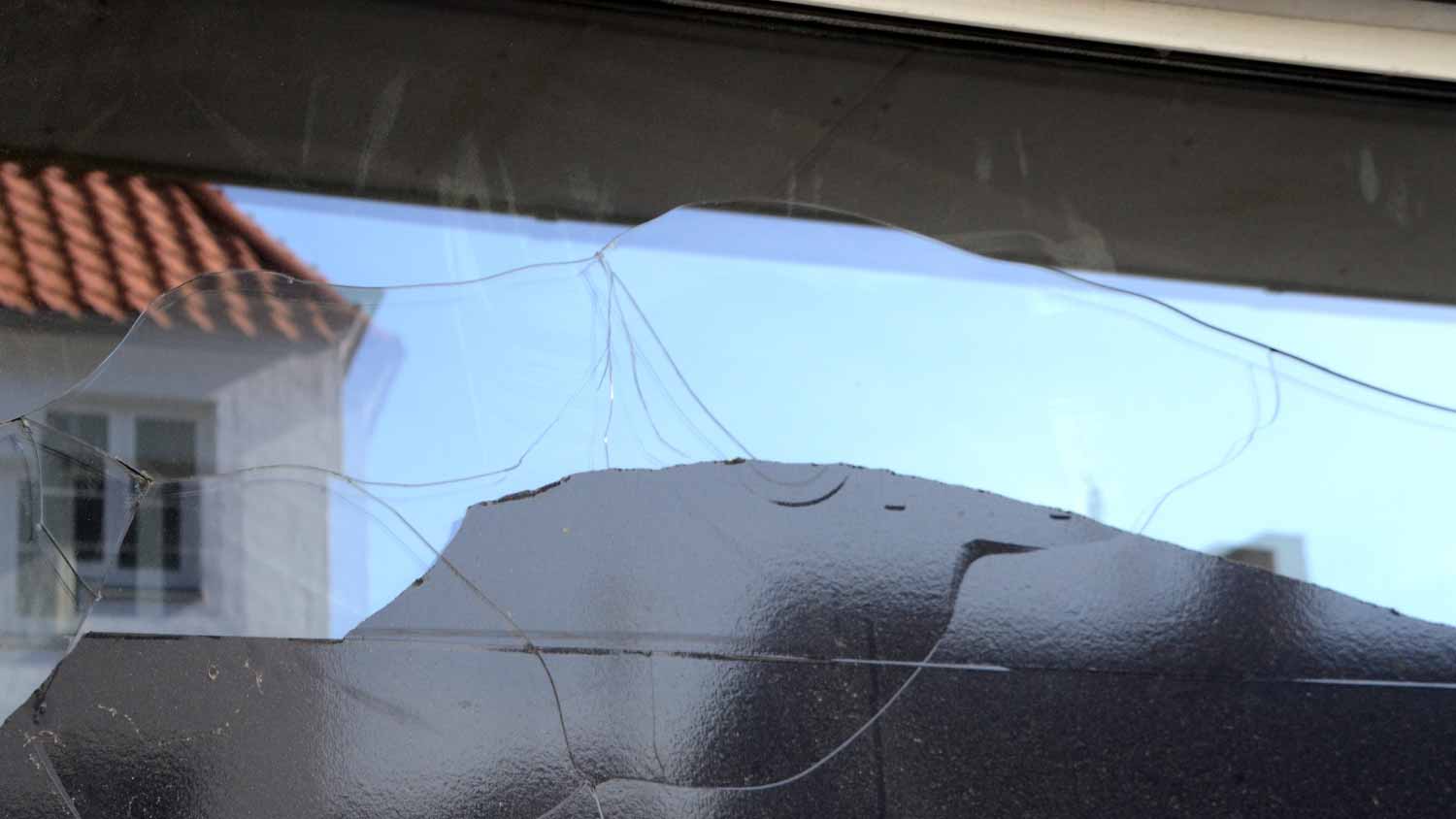What Causes a Thermal Window Stress Crack?
A quick blast of hot or cold air could bring a halt to your great new view


A thermal stress crack in a window stems from sudden temperature changes
Window placement and extreme weather are the most common causes
Thermal stress cracks are rarely a sign of low-quality glass
There are steps to take to protect windows from thermal stress cracks
Spotting a crack on your new window pane can be totally bewildering. At first glance, it's easy to assume that a stray acorn, hailstone, or baseball came along, but thermal stress cracks stem from something else. Thermal stress cracks commonly form at the outside edge of windows when your glass experiences extreme temperature differences. Here are a few causes of window stress cracks and how much to expect from window repair costs.
What is a Thermal Stress Crack?
A thermal stress crack is a common window problem that occurs in both old and brand-new window panes. The crack forms when a very sudden change in temperature causes the glass to expand or contract faster than it can handle. Similar to washing an ice-cold drinking glass under hot water in the sink, the window glass snaps under the pressure of the unexpected change.
Identifying a Thermal Stress Crack
Thermal window stress cracks are easy to identify when you know what you're looking for. Thermal stress cracks often:
Run perpendicular to the edge of the window
Originate from the outer edge of the pane
Extends straight from the edge for at least half an inch
Splinters or turns elsewhere after the initial straight half-inch
Does not look like an hourglass or starburst pattern
Common Thermal Stress Crack Causes

While other types of window cracks come from damage or poor installation, thermal stress cracks are a bit more complex. The issue often comes from your home's position in relation to the sun, extreme weather, or the design of your HVAC. While some of these factors are not in your control, it's still helpful to be aware of the risks.
1. Extreme Weather Conditions
When the weather turns at the drop of a hat, the thermal pressure on your window can lead to a stress crack. Freezing temperatures overnight and strong, hot sunshine in the morning can warm up glass too quickly. Regions prone to extreme temperature swings should consider stronger types of window glass or fortifying window tints, particularly on large bay picture windows.
2. Window is Partially Shaded
Trees, fences, awnings, and your neighbor's house all affect the sun and shade that hit your windows. Large windows with direct sun on one end and shade on the other will heat unevenly. Window stress cracks are not uncommon on newly installed windows, partially in the shade. Home builders should consider these factors when installing large glass panes with uneven obstructions.
3. Sudden Changes in Shade
In the same theme, windows that suddenly go from getting total shade to partial shade can experience issues as well. When a storm takes down a tree, your neighbor builds a fence, or your new pergola blocks the light, the new solar stress on the glass can lead to thermal cracks. Keep this in mind when making major changes within your control, such as considering when to trim tree branches.
4. HVAC ventilation
If your HVAC vents or space heaters sit too close to a window, they can cause an extreme temperature difference that leads to stress cracks. This is important to note when placing the heads of your mini-split HVAC system or vent work for central air. Also, always keep space heaters at least three feet away from windows—and potentially flammable curtains—to avoid problems.
5. Poor Window Insulation
Double and triple-paned windows often contain argon or krypton gas between the glass for additional insulation. Poorly installed insulation gas can cause too much pressure on the glass when the temperature outside drastically changes. Areas with unpredictable climates or at extreme elevations may experience problems. This is just another reason to work with a professional team.
How To Repair a Thermal Stress Crack
First things first, it's always best to hire a window repair team when you have a crack in your window. If they recently installed the window, the pane may still be under warranty from the manufacturer for thermal stress cracks.
If there is only a small thermal stress crack, consider fixing the window crack yourself. The process costs between $25 and $50 and requires two-part epoxy made for fixing window glass. Keep in mind that you will still be able to see the crack in your window, but it's a great temporary fix before hiring a local window replacement team.
Nail polish or varnish will only cover a window glass scratch, but a window crack isn’t going to be fixed. It’s actually going to open more because the expansion makes the window move. A crack is not fixable, it has to be replaced the proper way.
Preventing Thermal Stress Cracks
While there isn't much you can do to prevent unexpected weather changes or your neighbors building a fence, you can fortify your windows to at least reduce the likelihood of cracks. Here are some ways to avoid these frustrating fractures:
When replacing window panes, consider a stronger type of window glass.
Keep space heaters and AC vents away from windows in direct sun.
Speak with window installers about insulated glass that is double or triple-paned.
In new homes, consider shade when installing large windows.
Maintain your windows by keeping an eye out for small cracks, chips, or broken seals.





- Thermal Pane Windows 101: Everything You Need to Know
- 7 Common Window Problems and How to Avoid Them
- How Long Do Windows Last and When Should You Replace Your Windows?
- In Need of Window Leak Repair? Here’s Who to Call for a Leaking Window
- 10 Tips on How to Make Windows More Energy Efficient
- 10 Window Maintenance Tips to Get the Best-Performing Windows You’ve Ever Had
- Shedding Light on All the Different Parts of a Window
- 14 Things to Consider Before Buying Windows
- 6 Tips for Choosing the Right Replacement Windows for Your Home
- How to Seal Windows for Winter: A Complete Guide











